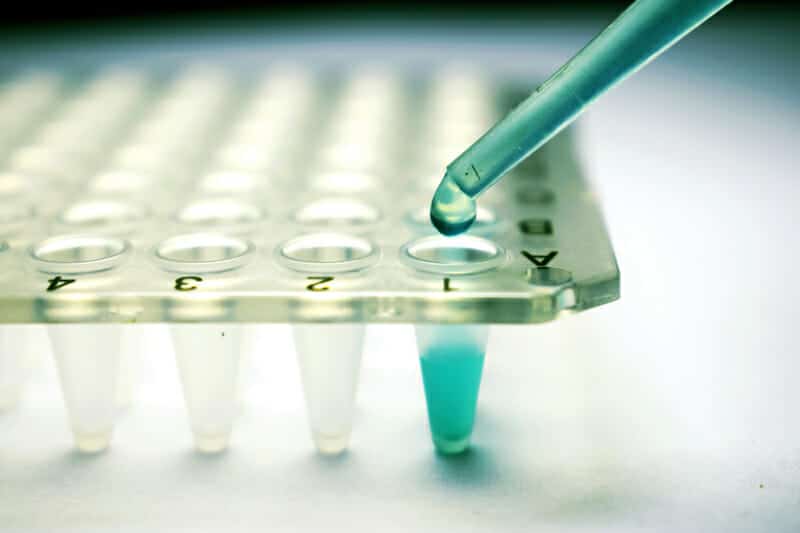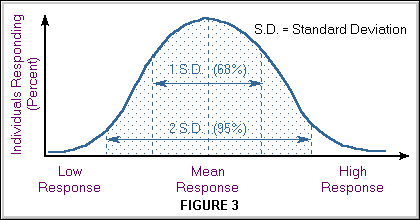Why The New York Times Is Wrong About Hair Loss (And How To Permanently Fix It)
A form of this article was originally published on the Jay C Campbell website. We are republishing a similar version of the article here. Enjoy!
I was recently sent an article about hair loss in the New York Times by an executive in the entertainment industry.
Titled "Losing Your Hair? You Might Blame The Great Stem Cell Escape", I thought it was a great opportunity to educate my audience on what truly matters for permanently regrowing hair.
There will never be a lack of information on the subject, nor will there ever be a lack of innovation in solving one of the world's oldest problems concerning male (and female) beauty.
Think of this short article as "meta-education": A guide on how to critically assess information on the Internet about hair loss.
What Does The Article Say About Hair Loss?

The article revolves around a recently published paper in the scientific journal Nature titled "Escape of hair follicle stem cells causes stem cell exhaustion during aging".
And in it, there are two central discoveries:
"(1) Stem cell (SC) exhaustion is a hallmark of aging. However, the process of SC depletion during aging has not been observed in live animals, and the underlying mechanism contributing to tissue deterioration remains obscure. We find that, in aged mice, epithelial cells escape from the hair follicle (HF) SC compartment to the dermis, contributing to HF miniaturization [confirmed via live imaging]."
Dr. Rui Yi and his colleagues already knew that stem cells located in a region of your hair follicles called the "bulge" will divide into hair cells, which are responsible for generating the hair shaft and its corresponding sheath.
But after going through many cyclical periods of growth, the follicle becomes inactive and the hair shaft stops growing... you shed it off and it gets replaced by a new hair strand.
Here's where things get interesting: This shedding is distinct from hair LOSS, with the former involving leftover stem cells within the bulge dividing into hair cells (hence a new strand of hair is grown).
What Dr. Yi et al. discovered was that mice who grew old experienced the greying of hair and loss of said hair because the stem cells were escaping from the bulge through tiny holes within the follicles.
This involves a process of changing their shape, exiting through tiny holes within the follicle, reverting back to their original shape, and then leaping a long "distance" from their niche.
To use a car analogy: Stem cells are the mechanics providing continuous replacement parts, and eventually choose to walk off the job.
"(2) Single-cell RNA-seq and assay for transposase-accessible chromatin using sequencing (ATAC-seq) reveal reduced expression of cell adhesion and extracellular matrix genes in aged HF-SCs, many of which are regulated by Foxc1 and Nfatc1. Deletion of Foxc1 and Nfatc1 recapitulates HF miniaturization and causes hair loss."
The second discovery revolves around determining which genes are controlling the "stem cell journey" Dr. Yi and his colleagues were able to identify.
It turns out that FOXC1 and NFATC1 are responsible for keeping stem cells in the bulge, so it's no surprise they are not as active in hair follicle cells that are older.
To determine this, they bred mice lacking both genes and those mice started losing hair by 4-5 months of age.
When they reached 16 months of age ("middle-aged" in mice years), most of the leftover strands were gray and sparse in nature, and the majority of their hair was completely gone.
Are Stem Cells Truly Important For Fixing Hair Loss?

Like I said when Nick Andrews and I first introduced Auxano Grow to the world, you have multiple factors and causes associated with hair loss -- lifestyle, environment, genetics, etc.
Yet if you want to reduce hair loss to the 3-4 CRITICAL factors that make the most difference, they are as follows:
- Blood flow to the scalp
- Inflammation in the scalp (arguably whole-body inflammation as well)
- Aging via cellular senescence and DNA methylation
- Genetic predisposition to hair loss
Genetics play a more pivotal role in younger individuals and a far smaller role as you get older... but remember that there is an entire spectrum of responses, and some people will have weak/moderate genetic factors that are not prominent until older age.

(Source)
I inserted the picture above to make a major point: While it's true you'll see plenty of older people without any hair, you'll also see plenty of older people who effortlessly keep a full head of hair.
And if you recall the results of the study featured in The New York Times article, the mice may have lost hair and been bred to have subpar genes for hair growth, but they indeed had hair in the beginning.
Which brings me to another major point: The authors have not identified a core critical pathway to hair growth/loss, but rather a pathway for MAINTAINING whatever existing hair you have (otherwise the mice would have been unable to grow hair, and/or lost most of it before reaching adulthood).
The best way to explain the difference between a critical pathway and a maintenance pathway is to use the analogy of changing the oil in your car...
You can buy a brand new car, do absolutely zero oil changes, drive it for 3-5 years, and eventually something is going to break and stop the car from running.
(Think of not changing your car's oil as the equivalent of what the researchers did with knocking out those two genes in the mice they were using)
You won't see weird engine issues right away, but they'll appear at Year #2 of owning your vehicle instead of Year #6.
So even though changing your car's oil is important, you're not going to say "This solves every single problem with cars".
But that doesn't mean you won't acknowledge the importance of avoiding excess wear and tear in your body, and why you want to minimize how prone you are to inflammation and other things that can cause hair loss.
What ACTUALLY Matters For Hair Loss?

In order to get a strong understanding of what truly moves the needle for hair loss reversal and hair regrowth, you need to think like an engineer.
And the best way to do this is to take on the "black box" approach:
"...a black box is a device, system, or object which can be viewed in terms of its inputs [stimulus] and outputs [response], without any knowledge of its internal workings. Its implementation is opaque or “black.” Almost anything might be referred to as a black box: a transistor, an algorithm, or even the human brain."

(Source)
This may seem like a deceivingly complicated phenomenon to understand, so here are two more examples from Wikipedia:
"The child who tries to open a door has to manipulate the handle (the input) so as to produce the desired movement at the latch (the output); and he has to learn how to control the one by the other without being able to see the internal mechanism that links them. In our daily lives we are confronted at every turn with systems whose internal mechanisms are not fully open to inspection, and which must be treated by the methods appropriate to the Black Box."
"... [It] can be used to control situations that, if gone into deeply, may seem very complex. A further example of the Black Box principle is the treatment of mental patients. The human brain is certainly a Black Box, and while a great deal of neurological research is going on to understand the mechanism of the brain, progress in treatment is also being made by observing patients' responses to stimuli."
In other words... from an engineering perspective, the ONLY thing we care about are the critical inputs and the critical outputs.
So long as you draw the black box correctly, you can create an environment where "ABC goes in, XYZ comes out" consistently and all the things in-between are irrelevant.
Here's an easier way to understand this:
If you hit the letter 'a' on your keyboard and you have Microsoft Word open, 'a' will show up on the screen. If you hit 'Shift+B', a capitalized B appears.
There are a LOT of intermediate steps that happen between hitting the key on your keyboard and having the desired letter appear on the screen. You have an electrical signal going from the keyboard to the processor, which generates multiple complex processes before the letter appears.
However, you don't care about those intermediate steps and you DO NOT need to know them as long as the same thing happens every time. All you need are the inputs and the outputs.
With regards to hair loss, despite how incredibly complicated the signaling pathway in the growth and maintenance of hair can be, we more or less understand what changes will lead to the most dramatic results.
Why The Focus On Stem Cells Is A Dead End

This is the part where people will very easily get lost, so pay close attention!
I'm not going to say the article is "wrong", as the researchers are doing exactly what they're supposed to do: Ask questions, do the research, find answers to long-standing problems.
The problem arises once you start asking about how directly applicable this information is to the average Joe in the age bracket of 20-55 (which is where the overwhelming majority of the hair loss market exists).
What the article is saying, to put it in layman's terms, is the following:
"Ok, when you get into old age, certain genes don't function like they should anymore with regards to hair production and sustainment of existing hair, hence you start to lose hair.
However, this is pretty much every tissue in your body. It's why old people have saggy skin, get skin spots, and deal with a whole host of other health issues due to cellular senescence and DNA methylation (lots of other little factors but those are the major two contributing to aging). ALL your cells are functioning sub-optimally."
This article is NOT going to help Joe because he does not understand what he is reading and thus will falsely believe this article has the answer to his hair loss problems.
Even if you were to create an orally active peptide that targets the two genes mentioned, it will not be applicable to the vast majority of humans for two main reasons:
- At the age of 80 years old, you have more severe health problems to be worrying about than losing hair
- By targeting this pathway, you are incorrectly drawing the "black box" for this problem and therefore you won't stop hair loss
You put a peptide into the body, the cells respond in a certain fashion, and lots of complex things happen (receptors being bound to, cells signaling one another, etc.).
Granted, you will care about all these small details as a molecular biologist, but from an engineering perspective of solving the problem, you don't care and you don't need to know.
All you need to know is that you have signaling pathways, inputs and outputs, and you have to understand how those inputs behave relative to the outputs.
As long as you draw the black box correctly, everything else in-between doesn't matter.
Yet Another Dagger In The DHT Inhibition Theory
Now, there is one indirect conclusion from this article that supports our debunking of the DHT inhibition theory for hair loss:
Cellular health, which is directly related to the health of genes inside of the cells, is what really matters for hair loss.
Yes, increased DHT may be a part of hair loss, but it's a downstream effect of excess inflammation and not the root cause.
(And definitely not something you want to be toying around with if you care about your sexual health)
Think of it like loading your favorite computer game but it won't load properly on your monitor: You can't blame the monitor because the information it's processing has to come from the processor, which itself has to be working properly.
Going back to the loss of stem cells discovered by the researchers themselves, it's secondary to the actual root cause of dysfunctional genes because the mice are aging and the genes are not functioning properly.
The stem cells can't function optimally unless the genes are also working properly, which can only happen when you live a fully optimized lifestyle that prevents/minimizes the acceleration of aging and the onset of high inflammation.
Sitting on the couch all day, eating garbage, and not taking care of yourself is what accelerates your aging at the DNA level.
And given what we know about methylation and senescence in connection to lifestyle, environment, and genetic predisposition... it would have been more interesting to measure methylation of the FOXC1 and NFATC1 genes relative to when they began to start dysfunctioning.
CONCLUSION: Be Careful With What You Read

This article wasn't meant to be an attack on Dr. Yi and his colleagues in any way: They should be commended for their discovery and it's important to better understand the biological pathways responsible for hair loss and hair growth.
We have yet another reason why hair loss is so complicated in nature, with the escape of stem cells being a maintenance process (i.e. you still grow hair but you lose it sooner than the average person).
My concern is with people who will read The New York Times article and conclude Dr. Yi has solved hair loss once and for all, or get attached to the fancy-sounding buzzword of "stem cells".
Mentioning this buzzword is great for attention and research grant money, but that's as far as it goes for the average person.
If anything, the discovery of Dr. Yi should be a motivational reminder of why actions such as intermittent fasting (metabolic flexibility), intelligent training, and clean nutrition are critical to avoid the outcomes seen in this mouse study.
I also hope you now have a better idea of what to look for when you read hair loss information online and correctly interpret the findings of new scientific research.
And if you're in desperate need of a PROVEN hair regrowth solution, make sure to check out Auxano Grow V2 and use code JAY15 to get 15% off your purchase!











